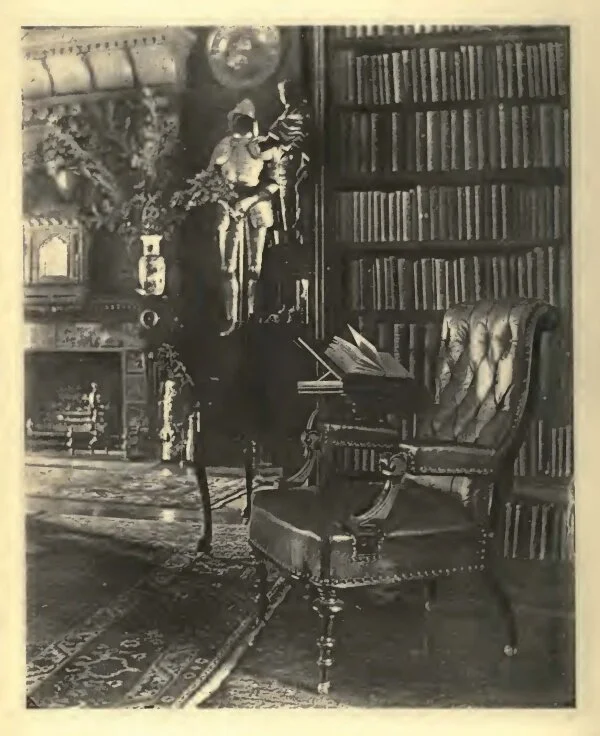(Receive our blog posts in your email by clicking here. If the author links in this post are broken, please visit our Free PDF Library and click on the author’s page directly.)
When John Walker Vinson arrived as a Southern Presbyterian missionary at Sutsein, North Kiangsu, China on February 4, 1907, he soon met a young lady already stationed there, Miss Jeanie deForest Junkin, daughter of Rev. Ebenezer Dickey Junkin and grand-daughter of Rev. George Junkin. He would come to be affectionately known to younger missionaries as “Uncle Jack,” but meanwhile was immediately smitten by the sight of this young lady, who became his wife a year later. They had six children, but only three survived to adulthood. Both Jack and Jeanie experienced severe health problems, and in 1923, Jeanie passed away soon after giving birth to a daughter.
Some years later, Jack, following an operation in Shanghai, nevertheless made a 30-mile trip from his station at Haizhou to the little country town of Yang- Djia-Gee, where he often ministered to the saints who lived there, some of whom he had baptized previously. While he was staying at the Christian Chapel there, a bandit army 600-strong arrived, captured many of the town’s inhabitants, and Jack as well. After learning what had happened, government forces were dispatched to deal with the crisis.
E.H. Hamilton, in his account of Vinson’s life and death, describes what happened next:
The bandit chief, realizing the perilous situation, came to Mr. Vinson, and asked him, “Do you want to go free?”
“Certainly,” came the reply.
“All right. If you will write a letter to the general of that army, and get him to withdraw his troops, I will let you go free,” said the bandit chief.
“Will you also release all these Chinese captives you are holding?” the missionary asked.
“Certainly not,” answered the bandit chief.
“Then neither will I go free,” said Mr. Vinson; and although the bandit chief was livid with rage, and vehement in his threats, the frail man before him was adamant.
During the night, the bandits, who were surrounded, attempted to break out and escape. They incurred heavy losses, and around 125 of the 150 prisoners managed to escape. Because of his condition, Jack was not able to escape, nor was he able to walk as the bandits fled the area with him and the other remaining captives. Hamilton continues:
A little girl, the daughter of a Chinese evangelist, was one of the captives of the bandits. The child afterward told how she had seen and heard a bandit trying to intimidate Mr. Vinson. She said the bandit pointed a gun at Mr. Vinson’s head, and said, “Aren’t you afraid?”
“No, I am not afraid,” came the answer.
And again, “I’m going to kill you. Aren’t you afraid?”
Once more the man of God replied, “NO, I AM NOT AFRAID. If you kill me, I will go right to Heaven.”
It was then that Jack was shot and killed, and beheaded.
Hamilton writes that “In his death Jack Vinson preached to more people than he ever had at one time in his life.” He also proposes to ask the reader a question, one that in various forms many believers have faced through the ages.
What would you do if you were held captive by a gang of ruthless bandits, and one of them came up to you— while your hands were bound—and pointing a pistol at your head, said, “I’m going to kill you. Aren’t you afraid?”
That was not a hypothetical question to Jack Vinson. It was grim reality, in North Kiangsu, China, November 2nd, 1931. What he did, and the reply he made, have both thrilled and strengthened the people of God in many lands. And by his answer he has earned a place alongside:
Queen Esther — “If I perish, I perish.”
Nehemiah — “Should such a one as I flee?”
Paul — “What are you doing weeping and breaking my heart? For I am ready not only to be imprisoned, but even to die at Jerusalem for the Name of the Lord Jesus.” (Acts 21:13. RSV)
Martin Luther — “Though every tile on every roof in Worms be a demon, yet will I go there.”
And David Livingstone — “Who am I that I should fear? Nay, verily, I will take my bearings tonight, though they be my last.”
For Jack Vinson looked his tormenter in the eye, and calmly answered, “No, I am not afraid. If you kill me, I will go right to heaven.”
A poem that Hamilton wrote within minutes of hearing the news of the tragic but glorious death of his friend, Jack, reminds us of the saying of Ulrich Zwingli (who died in battle): “Not to fear is the armor.”
Afraid? Of what?
To feel the spirit’s glad release?
To pass from pain to perfect peace.
The strife and strain of life to cease?
Afraid—of that?
Afraid? Of what?
Afraid to see the Saviour’s face,
To hear His welcome, and to trace
The glory gleam from wounds of grace?
Afraid—of that?
Afraid? Of what?
A flash—a crash—a pierced heart;
Darkness—light—Oh, Heaven’s art!
A wound of His a counterpart!
Afraid—of that?
Afraid? Of what?
To enter into Heaven's rest,
And yet to serve the Master blest,
From service good to service best?
Afraid—of that?
Afraid? Of what?
To do by death what life could not:
Baptize with blood a stony plot,
Till souls shall blossom from the spot?
Afraid—of that?
In times of trial, we are thankful for the testimonies of saints who have faced life-or-death questions before and honored Christ with all of their being to receive an eternal reward. Read the full story of Vinson’s life here.




![Map of the Synod of Appalachia from E.M. Craig, Highways and Byways of Appalachia (1927) [a book not yet available to read on LCP].](https://images.squarespace-cdn.com/content/v1/590be125ff7c502a07752a5b/1610072862405-JSAIANSL0ZKBHUC088PC/Map+of+the+Synod+of+Appalachia+smaller.jpg)


























